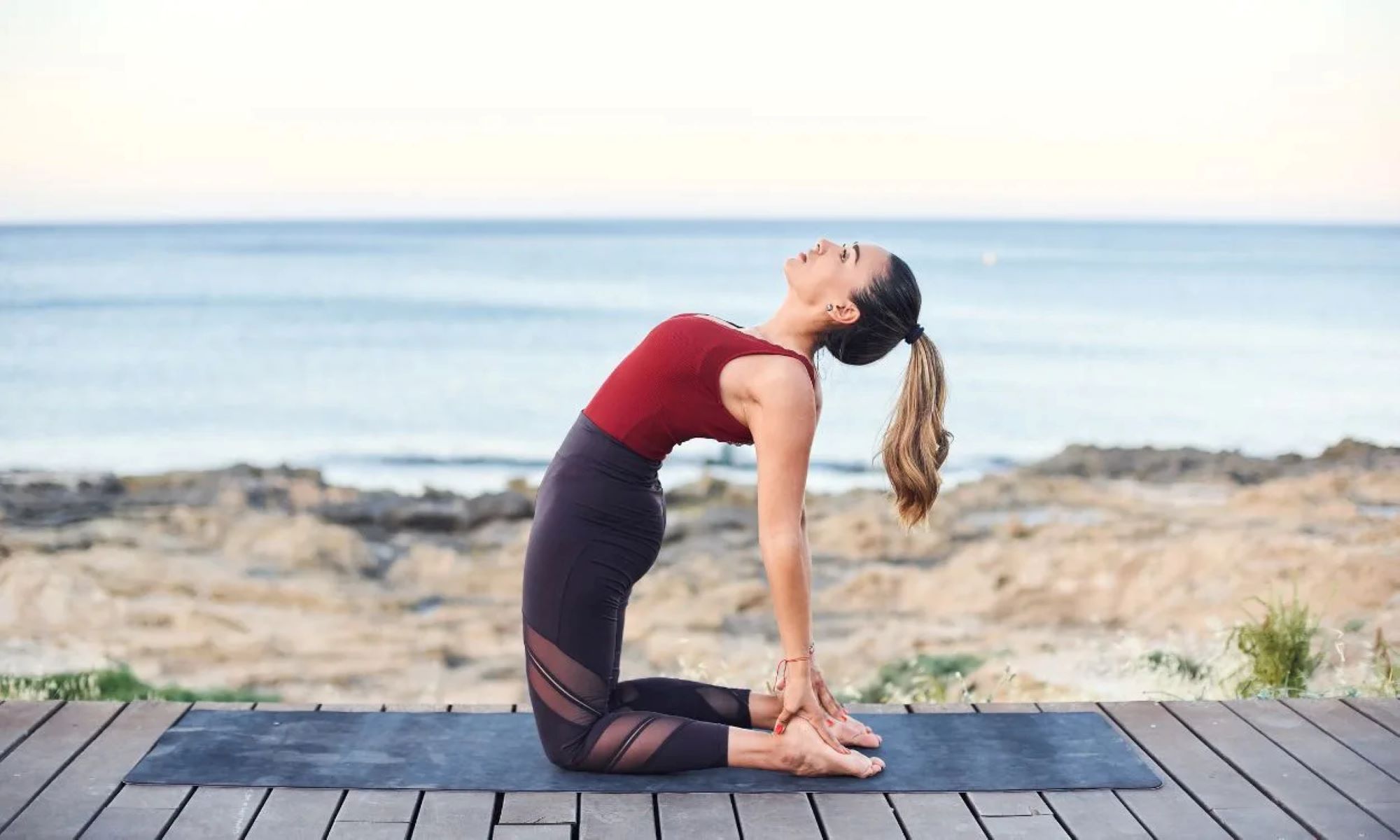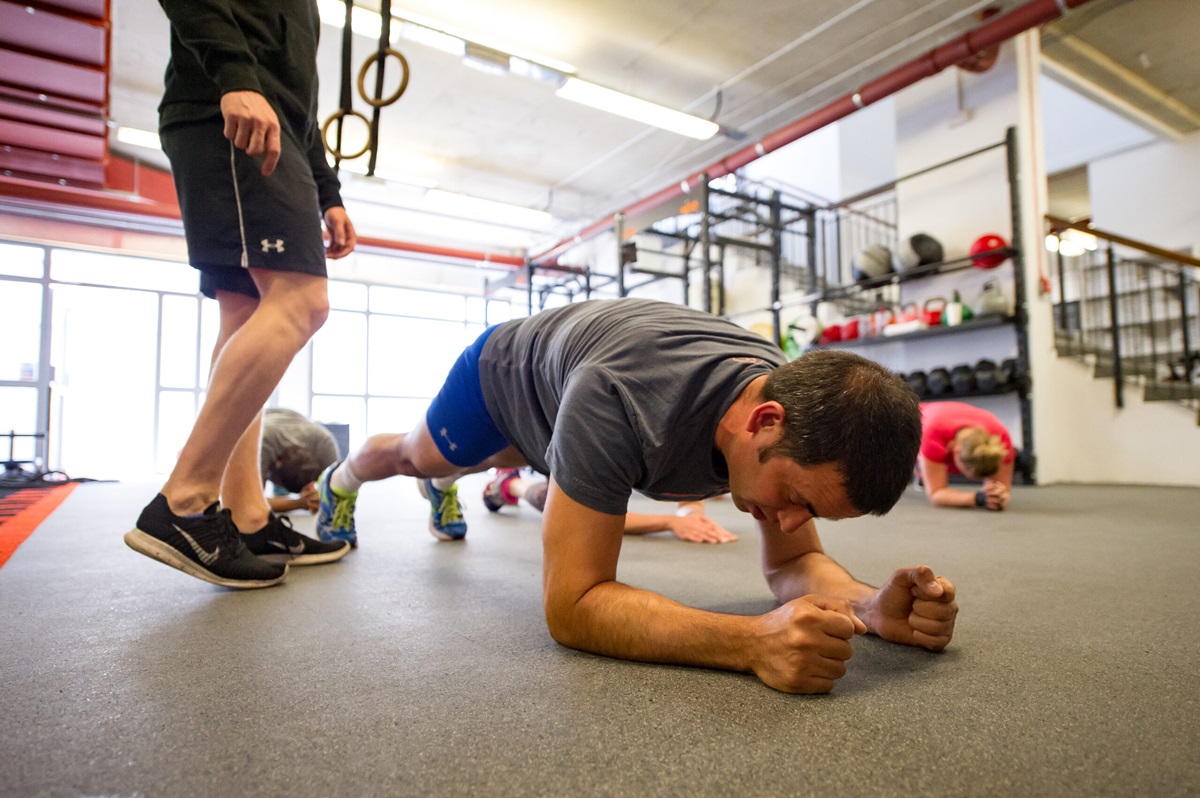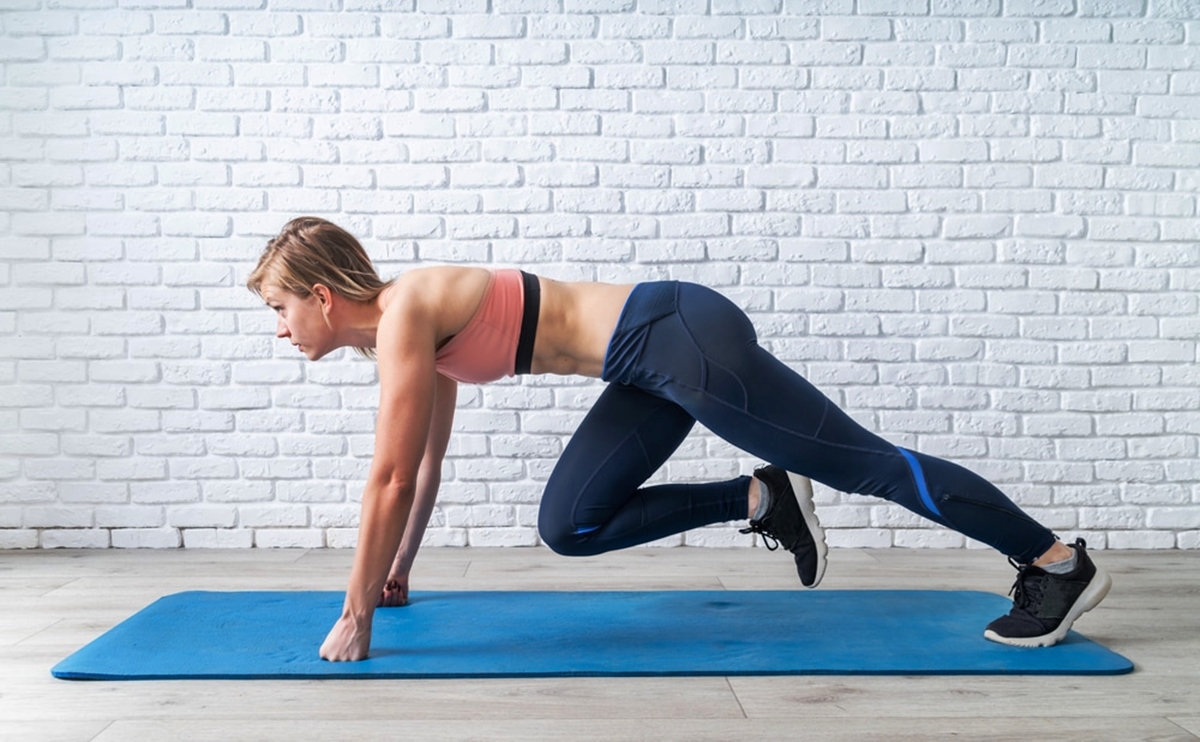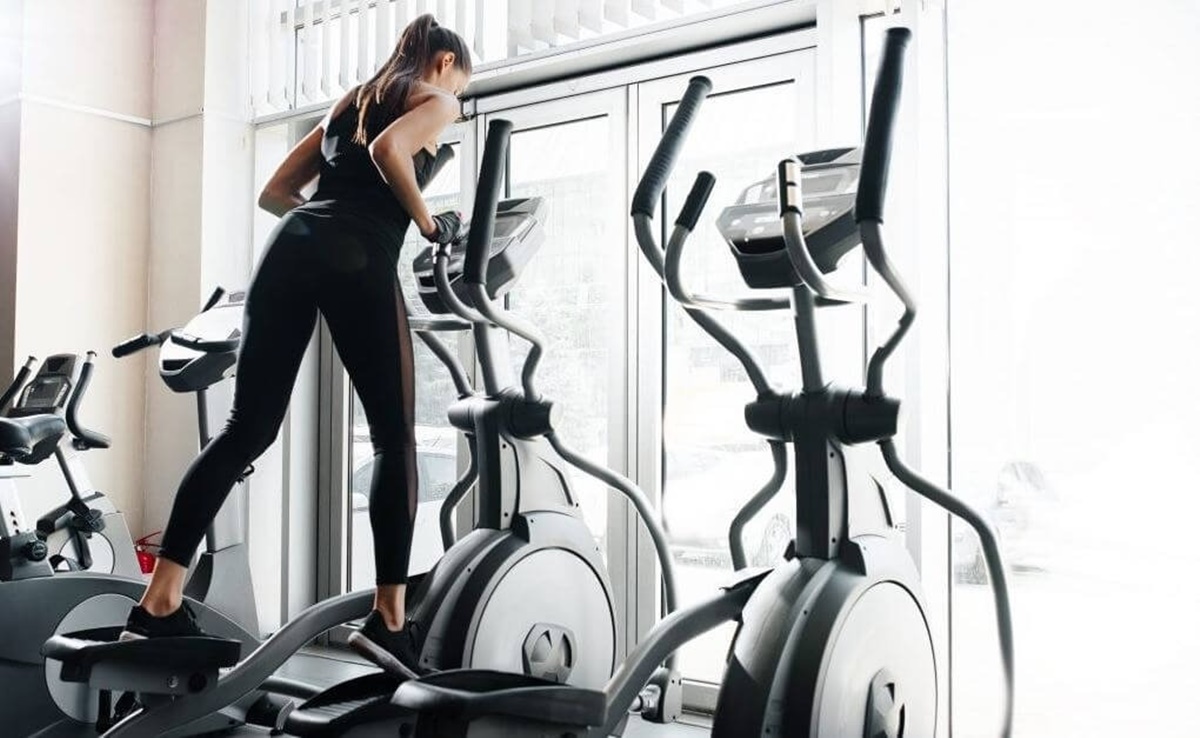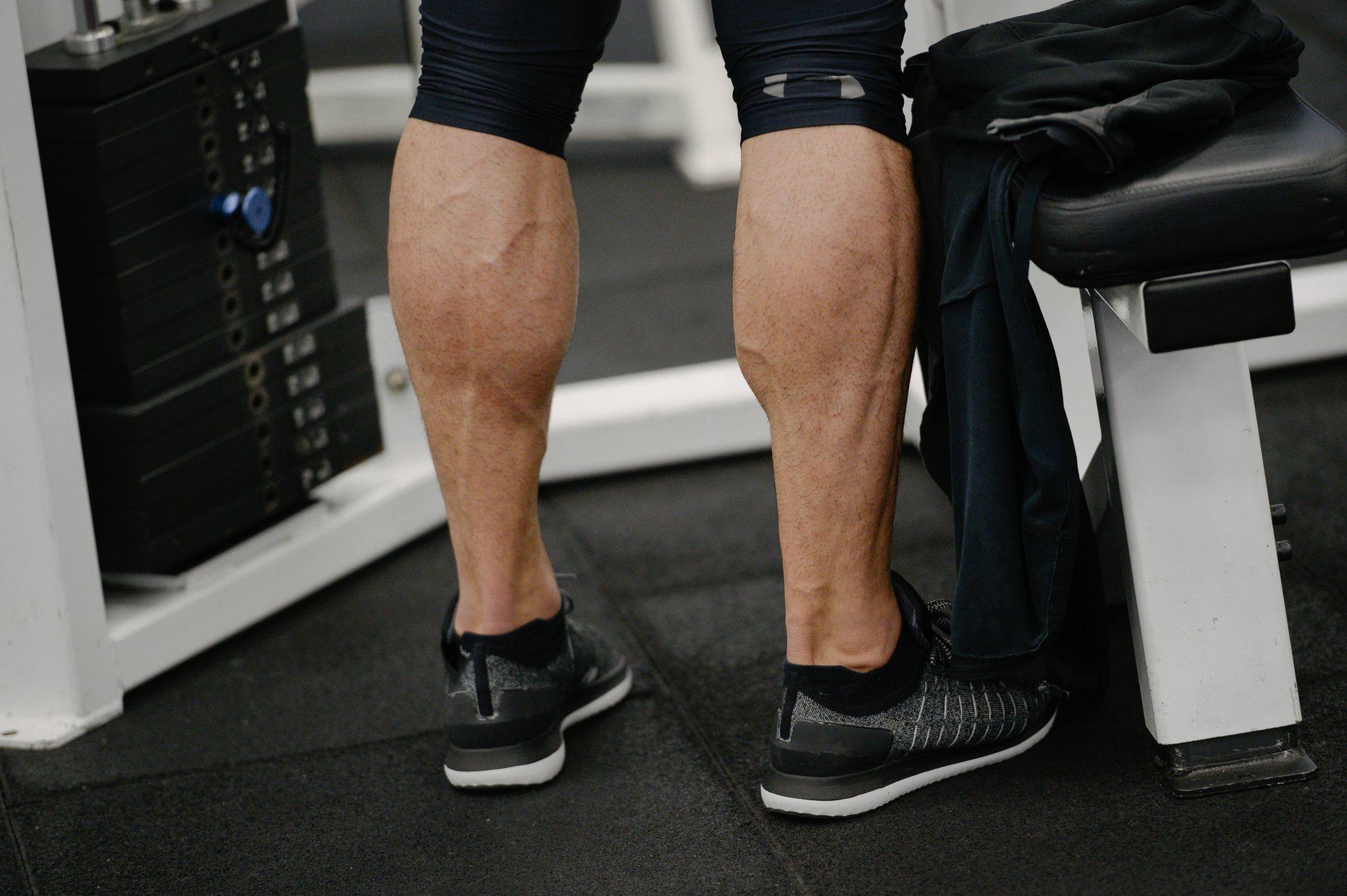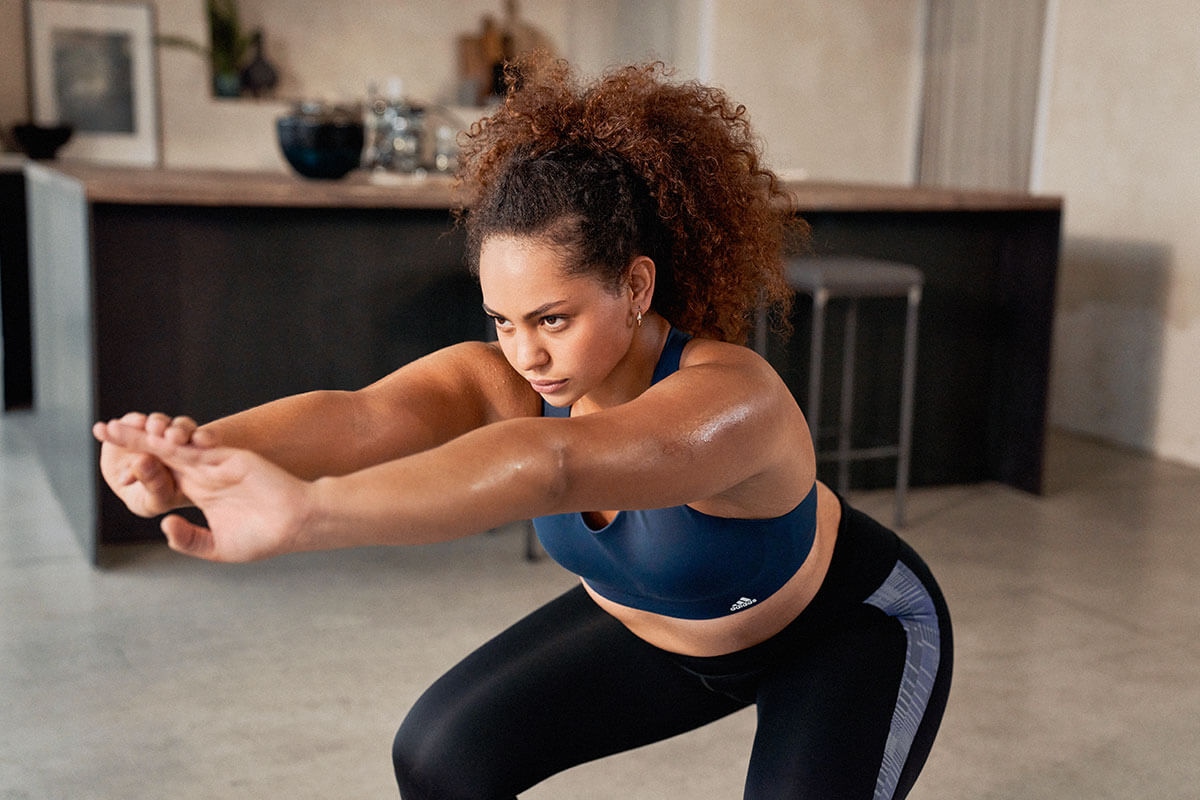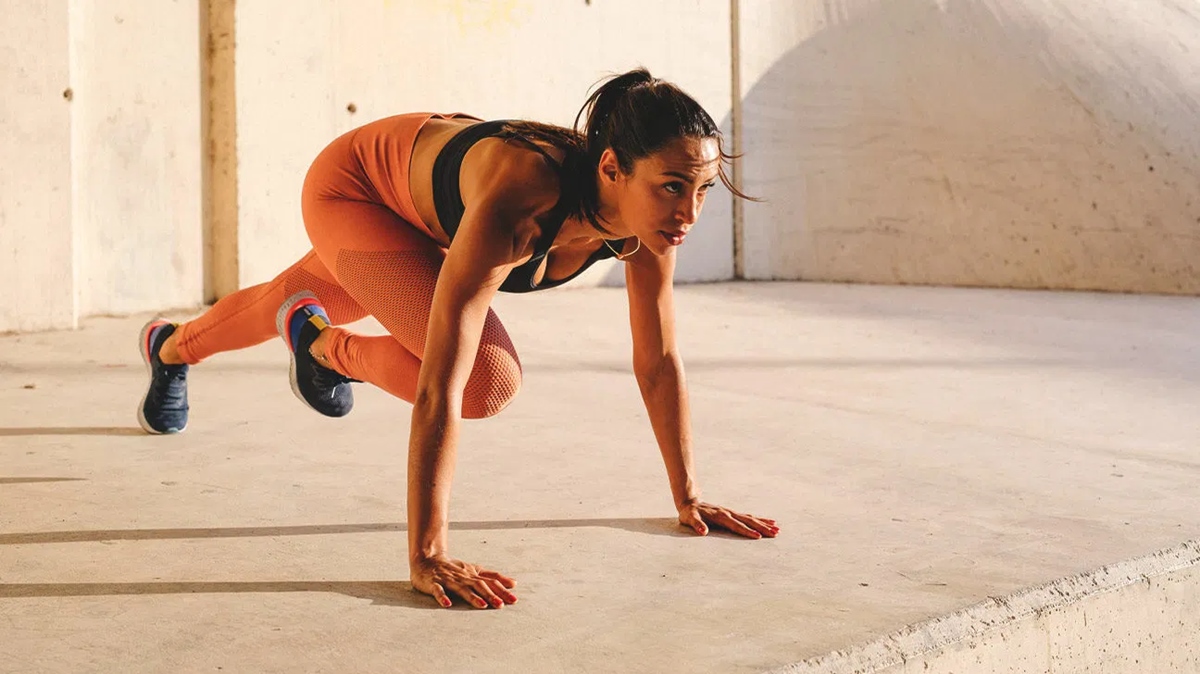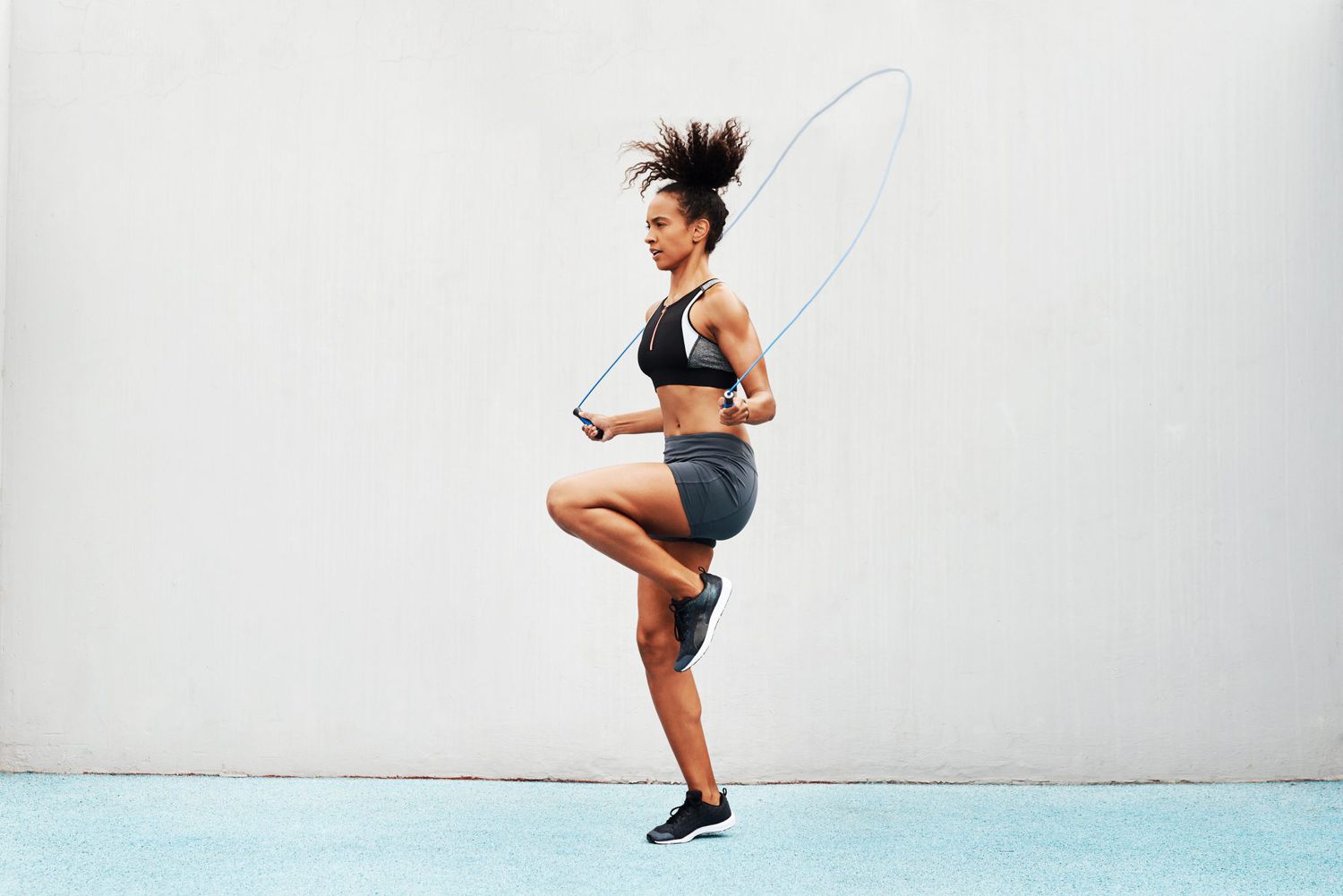

Featured
What Type Of Exercise Is Jump Rope
Modified: January 22, 2024
Get your heart pumping with this featured exercise - Jump Rope. Find out what type of exercise it is and how it can benefit your fitness goals.
Introduction
Jump rope exercise, also known as skipping rope, is a simple yet highly effective form of physical activity that has been popular for decades. From schoolyards to boxing rings, jump rope has been utilized for its numerous health benefits and its ability to improve overall fitness.
Jump rope exercise involves using a rope to jump over while maintaining a steady rhythm. It can be done individually or in groups, making it a versatile activity suitable for people of all ages and fitness levels.
Not only is jump rope exercise fun and engaging, but it also offers a wide range of benefits for both the body and the mind. In this article, we will explore the various advantages of jump rope exercise and the different types of exercises that can be performed using a jump rope.
Whether you are looking to improve your cardiovascular health, build muscle strength, enhance your coordination and balance, or burn calories, jump rope exercise can help you achieve your fitness goals. We will also discuss how to choose the right jump rope based on your personal preferences and needs.
So, if you are ready to jump into a new and exciting exercise routine, strap on your sneakers and grab your jump rope. Let’s discover the incredible benefits that jump rope exercise has to offer.
Benefits of Jump Rope Exercise
Jump rope exercise provides a wide array of benefits for the body and mind. Whether you are a fitness enthusiast, an athlete, or simply someone looking to improve their overall health, incorporating jump rope exercise into your routine can have a profound impact. Let’s explore some of the key benefits:
Cardiovascular Benefits: Jumping rope is a highly effective cardiovascular exercise that gets your heart rate up and improves blood flow throughout the body. This leads to a stronger heart, increased stamina, and improved overall cardiovascular health.
Muscular Benefits: Jump rope exercise engages multiple muscle groups in the body, including the calves, quads, hamstrings, and core muscles. Regular jump rope workouts can help strengthen and tone these muscles, leading to improved strength and endurance.
Coordination and Balance Benefits: Jumping rope requires coordination and balance as you time your jumps with the rotating rope. Practicing this exercise can enhance your motor skills, agility, and overall body control.
Calorie Burning Benefits: Jump rope exercise is a fantastic calorie burner. Studies have shown that jumping rope for just 10 minutes can burn as many calories as running at a moderate pace for 30 minutes. This makes it an excellent choice for those looking to shed some extra pounds.
Stress Relief: Jumping rope can also be a great stress-reliever. The rhythmic nature of the exercise combined with the release of endorphins can help reduce stress and improve overall mood.
Portable and Affordable: One of the greatest advantages of jump rope exercise is its portability and affordability. A jump rope can easily fit in your bag, allowing you to exercise anywhere, whether you’re at home, in the park, or traveling. Additionally, jump ropes are inexpensive and readily available, making it a cost-effective exercise option.
With these incredible benefits in mind, it’s no wonder that jump rope exercise has stood the test of time as a popular and effective fitness activity. Now, let’s move on to exploring the different types of jump rope exercises you can try.
Cardiovascular Benefits
Jump rope exercise is highly effective at improving cardiovascular health. It is a dynamic aerobic activity that gets your heart pumping and increases your overall endurance. Here are some key cardiovascular benefits of jump rope exercise:
Increased Heart Rate: Jumping rope elevates your heart rate, making it a fantastic cardiovascular exercise. The continuous movement of jumping increases blood flow, delivering oxygen and nutrients to your muscles, organs, and tissues.
Improved Lung Function: Jump rope exercise requires deep breathing to provide the necessary oxygen to your muscles. This increases your lung capacity and strengthens your respiratory system, leading to improved lung function.
Strengthened Heart Muscles: Regular jump rope exercise helps strengthen your heart muscles. As you jump, your heart works harder to pump blood throughout the body. This increased demand on the heart helps it become stronger and more efficient over time.
Lowered Blood Pressure: Jumping rope regularly can help reduce high blood pressure. The increased heart rate and improved blood flow from jump rope exercise can help lower your resting blood pressure and improve overall cardiovascular health.
Enhanced Endurance: Jump rope exercise improves your endurance by challenging your cardiovascular system. As you continue to jump, your body becomes more efficient at utilizing oxygen, allowing you to exercise for longer periods without feeling fatigued.
Reduced Risk of Cardiovascular Disease: Engaging in regular cardiovascular exercise like jump rope can lower the risk of developing cardiovascular diseases such as heart disease, stroke, and high cholesterol. It helps maintain healthy blood vessels, reduces plaque buildup, and improves overall heart health.
To maximize the cardiovascular benefits of jump rope exercise, it is recommended to maintain a consistent routine. Aim for at least 20-30 minutes of jump rope exercise per session, gradually increasing the duration and intensity as your fitness level improves.
Remember to listen to your body and start at a comfortable pace. If you have any pre-existing medical conditions or concerns, consult with your healthcare provider before starting a new exercise program. By incorporating jump rope exercise into your routine, you can enjoy improved cardiovascular health and take a proactive step towards a healthier lifestyle.
Muscular Benefits
Jump rope exercise offers a range of muscular benefits, making it an excellent workout for strengthening and toning various muscle groups in the body. Here are some key muscular benefits of jump rope exercise:
Improved Lower Body Strength: Jump rope exercise primarily targets the muscles in your lower body, including the calves, quadriceps, hamstrings, and glutes. The repetitive jumping motion helps to strengthen these muscles, leading to increased power and endurance.
Engaged Core Muscles: While jumping rope, your core muscles play a crucial role in stabilizing your body and maintaining proper posture. The constant engagement of the core muscles helps to improve overall core strength and stability.
Toned Arms and Shoulders: Holding the jump rope and maintaining the movement engages your arms, shoulders, and upper back. These muscles are involved in swinging the rope and maintaining the rhythm, resulting in improved muscle tone and definition.
Enhanced Jumping Power and Endurance: Jump rope exercise helps to develop explosive power in your leg muscles. The force generated while jumping translates to increased jumping ability, which can be beneficial in various sports and activities that require vertical leaps.
Improved Balance and Coordination: Jump rope exercise requires coordination between your upper and lower body movements. This coordination helps to improve overall body control and balance, making daily activities and sports performance more efficient.
Functional Strength and Flexibility: Jumping rope involves a range of movements that enhance functional strength and flexibility. The constant jumping and footwork help to improve agility, speed, and overall body mobility.
Prevention of Osteoporosis: Jump rope exercise is considered a weight-bearing exercise, which helps to improve bone density and prevent osteoporosis. This is particularly beneficial for individuals at risk of developing this condition, such as postmenopausal women or those with a family history of osteoporosis.
Whether you’re looking to strengthen specific muscle groups or improve overall muscle tone, incorporating jump rope exercise into your routine can help you achieve these goals. Remember to warm up before starting your jump rope workout and to cool down and stretch afterwards to prevent muscle strains or injuries.
Challenge yourself by trying different jump rope techniques and variations to target specific muscle groups. With consistency and proper form, you’ll start to notice improvements in muscle strength, endurance, and overall body composition.
Now that we’ve explored the muscular benefits of jump rope exercise, let’s move on to the next section, which covers the coordination and balance benefits.
Coordination and Balance Benefits
Jump rope exercise is not only a great cardiovascular and muscular workout, but it also provides numerous benefits for coordination and balance. The rhythmic and coordinated movements required during jump rope exercise help to improve overall body control and enhance these essential skills. Let’s delve into the coordination and balance benefits of jump rope exercise:
Improved Motor Skills: Jumping rope requires precise timing and coordination between your hands and feet. As you practice and master this skill, your motor skills, including hand-eye coordination and footwork, will steadily improve.
Enhanced Balance: Jump rope exercise challenges your balance and stability as you maintain an upright posture while jumping. The proprioceptive feedback gained from maintaining balance during the exercise helps to enhance overall balance and stability in other activities of daily life.
Increased Body Awareness: Jump rope exercise requires you to be conscious of your body position, movement, and space. This heightened body awareness translates to better coordination and control of your movements in various physical activities.
Better Timing and Rhythm: Jumping rope requires precise timing and coordination with the rotating rope. As you practice, your sense of timing and rhythm improves, helping you develop a better sense of coordination not only during jump rope exercise but also in other activities such as dancing or sports.
Enhanced Proprioception: Proprioception is the body’s ability to sense its position, movement, and spatial orientation. Jump rope exercise stimulates the proprioceptive system, which in turn enhances overall body awareness and control. This can be particularly beneficial for athletes in sports that require quick changes in direction and agility.
Improved Cognitive Function: Jump rope exercise engages both the mind and body, requiring focus, concentration, and mental agility. By challenging the brain’s cognitive functions, jump rope exercise can help improve mental clarity and overall cognitive performance.
Better Athletic Performance: The coordination and balance skills developed through jump rope exercise can directly transfer to improved athletic performance in various sports. The increased body control and spatial awareness can enhance agility, reaction time, and overall performance on the field or court.
As you incorporate jump rope exercise into your routine, focus on maintaining proper form, executing the jumps with precision, and gradually increasing the complexity and intensity of your routines. This way, you can maximize the coordination and balance benefits of this versatile exercise.
Now that we’ve explored the coordination and balance benefits of jump rope exercise, let’s move on to the next section, which focuses on the calorie burning benefits.
Calorie Burning Benefits
Jump rope exercise is a highly effective calorie-burning workout that can help you shed unwanted pounds and achieve your weight loss goals. This fun and engaging exercise routine torches calories at a high rate, making it an excellent addition to your fitness routine. Let’s explore the calorie burning benefits of jump rope exercise:
High Calorie Burn: Jump rope exercise is a full-body workout that engages multiple muscle groups simultaneously. This dynamic movement leads to an elevated heart rate and increased energy expenditure, resulting in a high caloric burn. Studies have shown that jumping rope for just 10 minutes can burn around 100-150 calories, making it an efficient form of calorie-burning exercise.
Interval Training Potential: Jump rope exercise lends itself well to interval training, which involves alternating between high-intensity bursts of activity and active recovery periods. By incorporating intervals into your jump rope routine, you can further increase the calorie burn by ramping up the intensity during the high-intensity intervals.
Increased Metabolic Rate: Engaging in high-intensity exercises like jump rope can elevate your metabolic rate, both during and after the workout. This means that your body continues to burn calories at an accelerated rate even after you finish exercising, thanks to the afterburn effect.
Fat Loss: Jump rope exercise specifically targets stubborn body fat. As you jump, the energy demand from your muscles encourages your body to tap into its fat stores for fuel. This can help you achieve a leaner physique and reduce overall body fat percentage.
Improved Cardiovascular Fitness: Jumping rope elevates your heart rate and challenges your cardiovascular system. Regular jump rope exercise can improve your cardiovascular fitness over time, increasing your endurance and enabling you to burn more calories during future workouts. This cardiovascular enhancement translates to a higher calorie burn during each session.
Versatile Calorie Burner: Jump rope exercise allows for a variety of movement patterns and intensity levels. You can adjust the tempo, add variations, and incorporate different jump rope techniques to keep your workouts challenging and exciting. This versatility ensures that you can continue to burn calories effectively and prevent fitness plateaus.
While jump rope exercise is an effective calorie-burning activity, it is important to remember that results may vary depending on factors such as your body weight, intensity level, and overall fitness level. To maximize calorie burn, aim for at least 20-30 minutes of jump rope exercise per session, gradually increasing the duration and intensity as your fitness improves.
Remember to pair your jump rope exercise with a well-balanced diet for optimal weight loss results. Focus on consuming nutrient-dense foods that support your overall health and fitness goals.
Now that we’ve explored the calorie burning benefits of jump rope exercise, let’s dive into the different types of jump rope exercises you can incorporate into your workouts.
Types of Jump Rope Exercises
Jump rope exercises offer a variety of ways to keep your workouts engaging, challenging, and fun. By incorporating different techniques and variations, you can target specific muscle groups, improve your coordination, and enhance your cardiovascular fitness. Let’s explore some of the most popular types of jump rope exercises:
Basic Jump: The basic jump is the foundation of jump rope exercises and is perfect for beginners. Start with your feet together and jump over the rope with a slight bounce, landing softly on the balls of your feet. As you gain confidence, you can increase the speed and height of your jumps.
Alternate-Foot Step: This exercise involves lifting one foot slightly off the ground while the other foot does a basic jump. Alternate your feet with each rotation of the rope, mimicking a running motion. This exercise improves coordination and rhythm and provides a moderate intensity workout.
High Knee: In the high knee exercise, you lift your knees as high as possible with each jump while maintaining a steady rhythm. This exercise targets your core, hip flexors, and quadriceps, providing a great workout for your lower body while increasing your heart rate.
Side-to-Side: Start with your feet together and jump from side to side, clearing the rope with each jump. This exercise engages your hip abductors and adductors, improves coordination and lateral movement, and adds variety to your jump rope routine.
Criss-Cross: The criss-cross exercise involves crossing your arms in front of your body as you jump. As the rope passes under your feet, quickly uncross your arms and jump again. This exercise challenges your coordination, timing, and upper body strength, particularly in your shoulders and arms.
Double Under: The double under is an advanced jump rope exercise that involves rotating the rope twice under your feet with each jump. This requires precise timing, coordination, and explosive power. It is a high-intensity exercise that boosts your heart rate and challenges your endurance.
These are just a few examples of the many jump rope exercises you can incorporate into your routine. You can create your own combinations, mix and match different techniques, and increase the intensity by incorporating interval training or increasing the speed of your jumps.
As with any exercise, it’s important to start at a comfortable level, gradually increase the complexity and intensity, and listen to your body. Choose exercises that align with your fitness goals and target the specific muscle groups you want to work on.
Now that we’ve explored the different types of jump rope exercises, let’s move on to the next section, which provides guidance on choosing the right jump rope for your needs.
Basic Jump
The basic jump is the foundational jump rope exercise that serves as a starting point for beginners. It is a simple yet effective exercise that improves cardiovascular endurance, coordination, and rhythm. Here’s how to perform the basic jump:
- Start by holding the jump rope handles in each hand, palms facing forward, and your arms comfortably extended at your sides.
- Stand with your feet together and maintain an upright posture, engaging your core muscles.
- Swing the jump rope over your head and to the front of your body, creating an arc shape. The rope should pass over your body just as you’re about to jump.
- As the rope approaches the ground, jump off the balls of your feet, lifting your body just enough to allow the rope to pass under your feet. Keep your elbows close to your body and your wrists relaxed to maintain a smooth and efficient motion.
- As you land, absorb the impact by bending your knees slightly to minimize stress on your joints. Aim to land softly and quietly.
- Continue jumping, maintaining a steady rhythm and landing softly on each repetition.
It’s important to find a comfortable jumping pace that works for you. Start with a slower tempo and gradually increase your speed as you become more proficient. Focus on maintaining proper form, including a tall posture and minimal upper body movement.
The basic jump is a versatile exercise that can be modified to suit different fitness levels and goals. For beginners, aim to perform continuous jumps for 30 seconds to 1 minute, gradually increasing the duration as your stamina improves.
As you progress, you can challenge yourself by incorporating variations such as high knees, double jumps, or alternating feet jumps. These variations add intensity and complexity to the basic jump, providing a more challenging workout for your muscles and cardiovascular system.
Remember to warm up before starting your jump rope exercise and to cool down and stretch afterward to prevent muscle strains or injuries. Stay hydrated throughout your workout and take breaks if needed.
The basic jump is a fundamental building block for more advanced jump rope exercises. By mastering this foundational movement, you’ll build a solid foundation for improving your coordination, cardiovascular fitness, and overall athletic performance.
Now that we’ve covered the basic jump, let’s move on to the next type of jump rope exercise: the alternate-foot step.
Alternate-Foot Step
The alternate-foot step is a popular jump rope exercise that adds variation and challenges to your workout routine. This exercise focuses on improving coordination, rhythm, and agility while providing a moderate-intensity cardiovascular workout. Here’s how to perform the alternate-foot step:
- Start in a standing position with your feet shoulder-width apart, holding the jump rope handles in each hand.
- Swing the rope over your head and to the front of your body, creating an arc shape. As the rope approaches the ground, begin jumping.
- As you jump, lift one foot slightly off the ground, keeping the other foot planted.
- With each rotation of the rope, alternate lifting your feet off the ground, mimicking a running motion. The motion should be fluid and continuous, with one foot off the ground while the other foot touches down.
- Maintain a steady rhythm and continue alternating your feet for the duration of the exercise.
It’s important to maintain proper posture and engage your core muscles throughout the exercise. Keep your elbows close to your body, and aim for a smooth and controlled jumping motion.
The alternate-foot step increases the complexity of the basic jump by requiring coordination between your upper and lower body. It challenges your balance and agility while providing an effective cardiovascular workout. Start with a slower tempo and gradually increase your speed as you become more comfortable with the movement.
As you become more proficient, you can incorporate variations to further challenge yourself. For example, you can try increasing the speed of your foot movement, adding double jumps, or alternating the height of your foot lift. These variations not only increase the intensity but also engage different muscle groups, providing a well-rounded workout.
Like any other jump rope exercise, it’s important to warm up before starting the alternate-foot step and to cool down and stretch afterward. Take breaks if needed and listen to your body to prevent overexertion or injury.
By incorporating the alternate-foot step into your jump rope routine, you’ll improve your coordination, rhythm, and overall agility. This exercise adds variety and excitement to your workouts, making your fitness journey more enjoyable and rewarding.
Now that we’ve covered the alternate-foot step, let’s move on to the next type of jump rope exercise: the high knee.
High Knee
The high knee jump rope exercise is a dynamic movement that targets your lower body muscles while elevating your heart rate. This exercise involves lifting your knees as high as possible with each jump, creating a challenging and effective cardiovascular workout. Here’s how to perform the high knee exercise:
- Start in a standing position with your feet hip-width apart, holding the jump rope handles in each hand.
- Swing the rope over your head and to the front of your body, creating an arc shape. As the rope approaches the ground, begin jumping.
- As you jump, lift one knee up toward your chest as high as you can, while keeping your other foot slightly off the ground.
- Land softly on the balls of your feet with the same foot that started the jump, while simultaneously lowering your lifted knee down.
- Repeat the movement with the opposite knee, aiming to lift it as high as possible.
- Continue alternating between lifting your knees, maintaining a steady rhythm throughout the exercise.
Focus on engaging your core muscles to maintain stability and control during the high knee exercise. Keep your upper body relaxed, with your elbows close to your sides and your wrists supple.
The high knee jump rope exercise offers numerous benefits. By lifting your knees up toward your chest, you engage your lower abdominal muscles, hip flexors, quadriceps, and glutes. This results in improved lower body strength and endurance.
Additionally, the high knee exercise helps increase your heart rate, making it an effective cardiovascular workout. The dynamic movement stimulates your cardiovascular system, improving its efficiency and boosting your overall cardiovascular fitness.
To challenge yourself further, you can increase the speed and height of your knee lifts. This intensifies the workout and pushes you to work at a higher level of exertion.
As with any jump rope exercise, it’s crucial to warm up before starting and to cool down and stretch afterward. Listen to your body, take breaks as needed, and stay hydrated throughout your workout.
The high knee exercise adds variety to your jump rope routine while targeting essential lower body muscles and providing cardiovascular benefits. By incorporating it into your workouts, you’ll improve your coordination, strengthen your lower body, and increase your overall fitness level.
Now that we’ve covered the high knee, let’s move on to the next type of jump rope exercise: the side-to-side jump.
Side-to-Side
The side-to-side jump rope exercise adds a fun and dynamic element to your workout routine. It challenges your coordination, balance, and lateral movement, while providing a great cardiovascular workout. Here’s how to perform the side-to-side jump:
- Start in a standing position with your feet together, holding the jump rope handles in each hand.
- Swing the rope over your head and to the front of your body, creating an arc shape. As the rope approaches the ground, begin jumping.
- Instead of jumping vertically, move your body from side to side, clearing the rope with each jump.
- As you jump, shift your weight to one side, pushing off with the opposite foot and landing softly on the balls of your feet.
- With the next jump, shift your weight to the other side, pushing off and landing softly again.
- Continue alternating from side to side, maintaining a steady rhythm throughout the exercise.
Focus on engaging your core muscles to maintain stability and control during the side-to-side jump. Keep your upper body relaxed, with your gaze forward and your arms positioned comfortably by your sides.
The side-to-side jump rope exercise provides several benefits. By moving laterally, you engage your hip abductor and adductor muscles, improving your overall lower body strength and stability. This exercise also helps improve coordination and balance, as you have to maintain control while shifting your weight from one side to the other.
For an added challenge, you can increase the speed and intensity of the side-to-side jumps. You can also incorporate variations such as crossing the rope in front of your body or double side-to-side jumps.
As with any jump rope exercise, it’s important to warm up before starting and to cool down and stretch afterward. Take breaks as needed and listen to your body to prevent overexertion or injury.
The side-to-side jump rope exercise adds variety and excitement to your workouts while targeting essential lower body muscles and improving coordination. By incorporating it into your routine, you’ll enhance your cardiovascular fitness, strengthen your lower body, and challenge your balance and coordination skills.
Now that we’ve covered the side-to-side jump, let’s move on to the next type of jump rope exercise: the criss-cross.
Criss-Cross
The criss-cross jump rope exercise adds a fun and challenging twist to your workout routine. This exercise requires coordination, timing, and upper body strength, making it a great way to enhance your jump rope skills and cardiovascular fitness. Here’s how to perform the criss-cross exercise:
- Start in a standing position with your feet hip-width apart, holding the jump rope handles in each hand.
- Swing the rope over your head and to the front of your body, creating an arc shape. As the rope approaches the ground, begin jumping.
- As the rope passes under your feet, quickly cross your arms in front of your body, crossing the rope at chest level.
- Immediately uncross your arms as the rope completes the rotation, allowing it to pass under your feet again.
- Continue jumping and crossing your arms in a fluid and continuous motion, maintaining a steady rhythm.
Focus on engaging your core muscles to maintain stability and control during the criss-cross exercise. Keep your upper body relaxed, with your elbows close to your sides and your wrists supple.
The criss-cross jump rope exercise engages your upper body, particularly your shoulders and arms. The rapid arm movement challenges your coordination and timing as you coordinate the motion with the rotation of the rope. This exercise also adds a dynamic element to your workout, increasing the intensity and calorie burn.
For a greater challenge, you can increase the speed of the rotation and the velocity of the arm crossing movement. You can also experiment with variations, such as crossing the arms at different heights, or incorporating double criss-crosses for an even more intense workout.
As with any jump rope exercise, warm up before starting and cool down afterward. Take breaks as needed, listen to your body, and stay hydrated throughout your workout.
The criss-cross jump rope exercise adds variety and excitement to your routine while challenging your coordination and upper body strength. By incorporating it into your workouts, you’ll enhance your cardiovascular fitness, strengthen your upper body, and improve your overall jump rope skills.
Now that we’ve covered the criss-cross jump, let’s move on to the next type of jump rope exercise: the double under.
Double Under
The double under jump rope exercise takes your workout to the next level by adding intensity, speed, and coordination. This advanced exercise involves rotating the jump rope twice under your feet with each jump. Performing double unders not only increases your cardiovascular endurance but also challenges your coordination and timing. Here’s how to perform the double under exercise:
- Start in a standing position with your feet hip-width apart, holding the jump rope handles in each hand.
- Swing the rope over your head and to the front of your body, creating an arc shape. As the rope approaches the ground, begin jumping.
- As you jump, rotate the rope faster than usual, allowing it to pass under your feet twice with each jump.
- Focus on maintaining a quick rhythm and timing your jumps to coincide with the rope rotation.
- Land softly on the balls of your feet with each jump, maintaining control and stability.
- Continue jumping and performing double unders, maintaining a steady and controlled pace.
Performing double unders effectively requires practice, patience, and proper form. Focus on engaging your core muscles and keeping your upper body relaxed as you complete the jumps. Keeping your wrists supple and your elbows close to your sides will contribute to a smooth and efficient motion.
Double unders offer an intense cardiovascular workout, elevating your heart rate and increasing your calorie burn. This exercise also challenges your coordination and timing, as you need to synchronize your jumps with the quick rotation of the rope. Double unders can be a great way to add variety to your jump rope routine and push yourself to new fitness levels.
As with any advanced exercise, it is essential to warm up thoroughly before attempting double unders. Gradually increase the speed and intensity of the jumps as you become more comfortable and proficient. Take breaks as needed and listen to your body to prevent overexertion or injury.
Remember, mastering the double under exercise requires practice and persistence. Start with single jumps and gradually work your way up to performing double unders. With time and dedication, you’ll strengthen your coordination and timing, improving your overall jump rope skills.
Now that we’ve covered the double under exercise, let’s move on to the next section, which explores crucial factors to consider when choosing the right jump rope for your needs.
Choosing the Right Jump Rope
When it comes to choosing the right jump rope for your workouts, several factors need to be considered to ensure an optimal exercise experience. Here are some crucial factors to keep in mind:
Length of the Rope: The length of the jump rope is an important consideration to ensure proper form and effective jumping. Stand on the middle of the rope and pull the handles upward. The ideal length is when the handles reach your armpits. Adjust the length accordingly to fit your height and jumping style.
Material of the Rope: Jump rope ropes are typically made of various materials, including PVC, nylon, or coated steel cables. PVC ropes are lightweight and suitable for beginners, while nylon ropes provide durability and smooth rotations. Coated steel cables are more advanced and designed for speed and high-intensity workouts.
Handles and Grip: Comfortable handles are essential for a secure grip and smooth rotation. Look for handles made of soft foam, rubber, or ergonomically shaped materials that provide a comfortable grip and prevent slippage during your workouts. Some handles also have ball bearings for improved rotation speed and efficiency.
Weight of the Rope: The weight of the jump rope can affect your jumping speed and intensity. Lighter ropes are suitable for speed training and quick rotations, while heavier ropes provide more resistance and are beneficial for developing upper body strength. Consider your fitness goals and preference when choosing the weight of the rope.
Type of Jump Rope: There are different types of jump ropes available, each designed for specific purposes. Speed ropes are lightweight and built for rapid rotations and quick footwork. Weighted ropes add resistance and are ideal for strength and endurance training. Adjustable ropes offer versatility, allowing you to modify the length to accommodate your needs.
Budget and Quality: Set a budget based on your requirements and choose a jump rope that offers good quality and durability within that range. Invest in a jump rope that can withstand regular use and won’t break easily. Compare customer reviews and ratings to ensure you’re purchasing a reliable and long-lasting product.
Personal Preference: Consider your personal preferences and fitness goals when choosing a jump rope. Think about factors such as rope color, style, and any additional features that might enhance your workout experience. Select a jump rope that resonates with you and motivates you to maintain a consistent exercise routine.
Ultimately, the right jump rope for you is one that suits your needs, preferences, and fitness level. Experiment with different types and styles to find the one that feels most comfortable and efficient for your workouts.
Remember to properly maintain your jump rope by storing it correctly, avoiding excessive wear and tear, and replacing any worn-out parts or ropes as needed to ensure its longevity and optimal performance.
Now that we’ve explored the factors to consider when choosing a jump rope, you’re ready to embark on your jump rope journey and enjoy the many benefits it has to offer!
Factors to Consider
When it comes to choosing the right jump rope, there are several important factors to consider. These factors will help ensure that you select a jump rope that not only suits your individual needs but also enhances your overall jump rope experience. Here are the key factors to keep in mind:
Length: The length of the rope is crucial for proper jumping form. A rope that is too long can easily trip you up, while one that is too short can limit your range of motion. Find a rope that is adjustable or select one that matches your height and personal preference.
Material: Jump ropes are made from various materials such as PVC, nylon, or coated steel cables. Each material offers different benefits, including durability, flexibility, and rotation smoothness. Consider your needs and focus on finding a material that suits your jump rope goals.
Handles: The handles of the jump rope should be comfortable and easy to grip. Materials like foam or rubber provide a secure hold and minimize hand fatigue during longer workout sessions. Look for ergonomic designs and handles with a good grip to ensure maximum comfort and control.
Weight: Consider the weight of the jump rope rope. Lighter ropes are typically used for speed and agility training, while heavier ropes can provide more resistance for strength training. Choosing the right weight depends on your fitness goals and personal preferences.
Type: There are different types of jump ropes available, such as speed ropes, weighted ropes, or adjustable ropes. Speed ropes are lightweight and designed for fast rotations, while weighted ropes can help build strength and endurance. Adjustable ropes offer versatility and are suitable for individuals of various heights or those who want to try different jump rope exercises.
Budget: It’s important to consider your budget when choosing a jump rope. Determine the amount you’re willing to spend and look for options within that range. Remember, a higher price doesn’t always guarantee better quality, so research and read reviews to ensure you’re getting a jump rope that offers both value and durability within your budget.
Experience Level: Consider your experience level with jump rope exercises. If you’re a beginner, it may be best to start with a basic jump rope and gradually progress to more advanced options. Advanced jumpers may opt for speed ropes or specialty ropes tailored to their specific needs, such as competitive sports or high-intensity training.
By taking these factors into account, you can select a jump rope that meets your requirements and enhances your jump rope workouts. Remember to test different ropes, try various techniques, and listen to your body to find the best fit for your fitness journey.
Now that we’ve explored the key factors to consider when choosing a jump rope, you’re ready to make an informed decision and embark on your jump rope adventure. Enjoy the benefits, challenges, and excitement that come with this versatile exercise tool!
Length of the Rope
The length of the rope is an essential factor to consider when choosing a jump rope. Selecting the appropriate length ensures that you can jump comfortably and maintain proper form throughout your workouts. Here’s why the length of the rope matters:
Proper Form: Having a jump rope that is the correct length allows you to maintain proper form while jumping. If the rope is too long, it can easily get caught on the ground or your feet, disrupting your rhythm. On the other hand, if the rope is too short, it can lead to inefficient jumps and limit your range of motion.
Height Considerations: Your height plays a significant role in determining the length of the jump rope. Different heights require different rope lengths to ensure optimal performance. A general guideline is to stand on the middle of the rope and pull the handles upward. The handles should reach your armpits. Adjust the length of the rope accordingly to fit your height and jumping style.
Jumping Style: Your preferred jumping style may also influence the length of the rope you choose. Some individuals prefer a longer rope for slower jumps with more rope clearance, while others prefer a shorter rope for faster-paced jump rope routines. Consider your jumping technique and select a length that complements your style.
Experience Level: Beginners may find it easier to start with a slightly longer jump rope as it provides more forgiving timing and allows for better control while learning basic jump rope skills. Advanced jumpers who are proficient in various jump rope techniques may opt for a shorter rope to increase speed, agility, and complexity of their workouts.
When in doubt, it’s better to choose a longer rope that can be adjusted to your desired length. Most jump ropes come with adjustable features, allowing you to customize the length to suit your needs. Keep in mind that it’s always better to start with a slightly longer rope and gradually shorten it as you become more comfortable with your jumping abilities.
Experiment with different rope lengths to find the one that works best for you. Consider trying different styles and techniques to determine your preferences. Remember, jump rope length is a personal preference, and what works for one person may not work for another.
Ultimately, the right rope length allows you to jump comfortably and maintain proper form. It enhances your jump rope workouts, helps you achieve optimal results, and minimizes the risk of injury. By choosing the correct length, you can jump into your workouts with confidence and enjoy the full benefits of this versatile exercise tool.
Now that we’ve covered the importance of rope length, you’re ready to choose a jump rope that suits your needs and supports your fitness goals.
Material of the Rope
The material of the jump rope is a crucial factor to consider when choosing the right one for your workouts. Different rope materials offer varying benefits in terms of durability, flexibility, and rotation smoothness. Here’s why the material of the rope matters:
PVC: PVC (polyvinyl chloride) ropes are lightweight and affordable, making them a popular choice for beginners. They are durable and provide a good balance between flexibility and rigidity. PVC ropes are suitable for basic jump rope exercises and can withstand regular use.
Nylon: Nylon ropes are known for their durability and smooth rotation. They are more resistant to wear and tear than PVC ropes, making them a great option for individuals who plan to engage in intense and prolonged jump rope workouts. Nylon ropes are flexible and offer a consistent swinging motion, allowing for more precise jumps.
Coated Steel Cable: Coated steel cable ropes are more advanced and designed for speed and durability. The steel cable is coated with a protective material, such as PVC or nylon, to enhance durability, reduce friction, and improve rotation speed. These ropes are ideal for experienced jumpers or those looking to perform high-intensity and fast-paced workouts.
When choosing the material of your jump rope, consider your fitness goals, experience level, and preferences. If you’re a beginner or simply looking for a budget-friendly option, a PVC or nylon rope can be a suitable choice. On the other hand, if you’re an advanced jumper or aiming for speed and performance, a coated steel cable rope may be more suitable.
It’s important to note that the material is not the only determining factor of a rope’s quality. Factors such as the construction, weight, and handle design also contribute to the overall performance of the jump rope.
When selecting a jump rope, consider the durability and flexibility of the material. Opt for a rope that can withstand consistent use and won’t easily become tangled or damaged. Additionally, look for a material that provides a smooth and fluid rotation to support your jumping rhythm and technique.
Ultimately, the material of the jump rope can significantly affect your jump rope workouts. By choosing the right material based on your needs and preferences, you can enjoy a more enjoyable and effective exercise experience.
Now that we’ve covered the importance of the material of the rope, you’re ready to select a jump rope that offers the right combination of durability, flexibility, and rotation smoothness for your workouts.
Handles and Grip
The handles of a jump rope play a significant role in your overall jump rope experience. A comfortable and secure grip is essential for maintaining control, reducing hand fatigue, and achieving smooth rotations. Here’s why handles and grip are important factors to consider when choosing a jump rope:
Comfort: Comfortable handles are crucial for extended jump rope workouts. Look for handles made from soft foam, rubber, or other cushioned materials that offer a comfortable grip. The handles should feel ergonomic in your hands and minimize any discomfort or strain during your exercises.
Grip: A secure grip is essential to keep the jump rope from slipping out of your hands during vigorous exercise. The handles should have a textured surface or added grip features that prevent slippage, even when your hands become sweaty. A secure grip ensures that you can maintain control and perform your jumps with confidence.
Size and Shape: Consider the size and shape of the handles. They should be proportionate to your hand size, allowing you to hold them comfortably without strain. Handles that are too large or too small can negatively impact your grip and control. Additionally, consider the shape and design of the handles. Some handles have an ergonomic shape or contours that fit naturally in your palms, providing a more comfortable and secure grip.
Rotation: Handles should offer smooth rotation to facilitate effortless jumps. Look for handles that have ball bearings or other mechanisms that reduce friction and allow for fluid rotation. Smooth rotation enhances your jumping rhythm, minimizes any twisting of the rope, and improves overall jump rope performance.
Adjustability: Some jump ropes allow you to adjust the length of the handles. This feature can be beneficial if you want to customize the grip to your hand size or preference. Adjustable handles ensure a more personalized fit and can enhance your overall jump rope experience.
Choose jump rope handles that feel comfortable in your hands and provide a secure grip. Test different ropes to see how they feel and whether they allow for smooth rotations and control. Remember, the right handles will enhance your jump rope workouts, leading to more effective and enjoyable exercise sessions.
Some jump ropes offer interchangeable handles, allowing you to swap them out for different styles or materials. This feature provides versatility and the opportunity to find the handles that suit your preferences best.
By considering the comfort, grip, size, shape, and rotation of the handles, you can choose a jump rope that provides a satisfying and enjoyable workout experience.
Now that we’ve covered the importance of handles and grip, you’re ready to select a jump rope with handles that offer comfort, security, and smooth rotation for your jump rope workouts.
Conclusion
Jump rope exercise offers a wide range of benefits for your cardiovascular health, muscular strength, coordination, and calorie burning. Incorporating jump rope workouts into your fitness routine can be a fun and effective way to achieve your fitness goals. By choosing the right jump rope, you can enhance your workout experience and maximize your results. Remember to consider the length of the rope, the material of the rope, the handles and grip, and other factors discussed in this article.
When it comes to jump rope exercise, consistency is key. Start with the basics, such as the basic jump and the alternate-foot step, and gradually progress to more advanced techniques like the high knee, side-to-side, criss-cross, and double under. Challenge yourself, but listen to your body and progress at a pace that feels comfortable for you.
Whether you’re a beginner looking to incorporate jump rope exercise into your routine or an experienced jumper aiming to switch up your workouts, the right jump rope can make all the difference. By considering the factors that matter most to you, such as rope length, material, handles, and grip, you can choose a jump rope that suits your needs and enhances your fitness journey.
Remember to warm up before each session, pay attention to your form, and always prioritize safety. Stay hydrated, take breaks as needed, and have fun with your jump rope workouts. The versatility and effectiveness of jump rope exercise will soon have you reaping the rewards of improved cardiovascular fitness, increased muscle strength, enhanced coordination, and a healthier body overall.
So, grab your jump rope, find a suitable space, and get ready to jump your way to better health and fitness. Whether you’re in it for the cardiovascular benefits, muscular strength gains, calorie burning advantages, or simply the joy of jumping, the world of jump rope exercise awaits you. Enjoy the journey and the incredible results that come with it!
